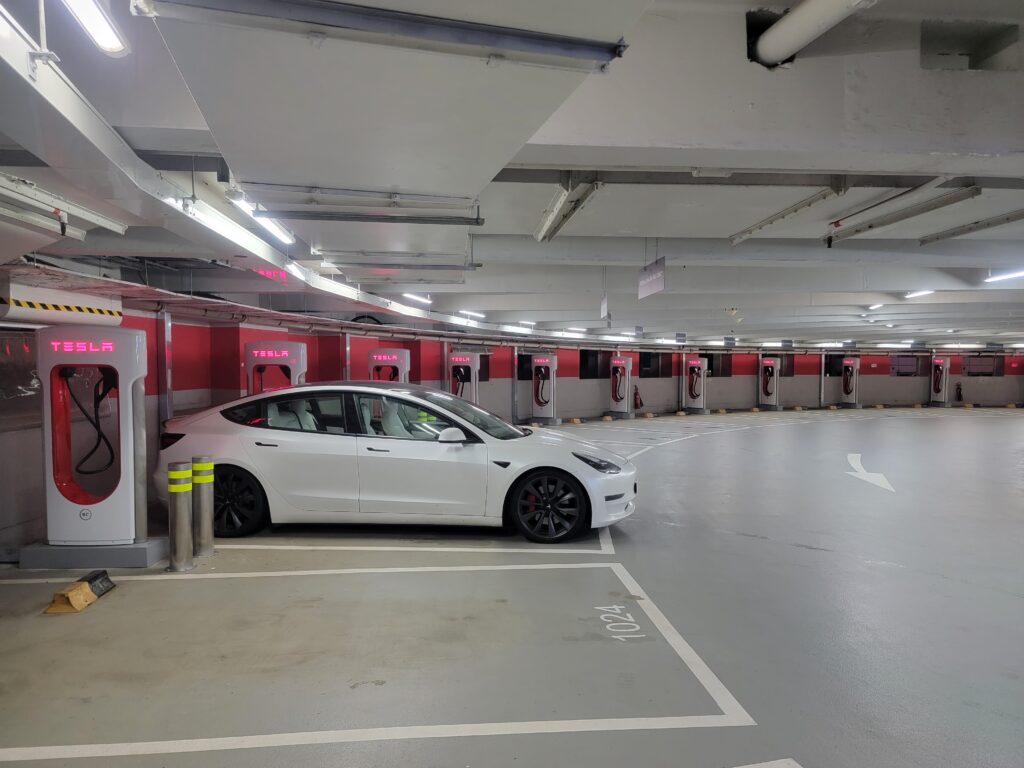
If you have no intention to read further, the short answer is HKD$14,468.30 (USD$1,843.12) after 2 years (26months) with 53,960KM driven which equates to HKD$0.27/KM (USD$0.034/KM). The total kWH charged is 12,600kWH which equates to 0.23 kWH/KM.
If you are interested to know my charging habits and why it costs almost HKD$15,000 to charge my Tesla Model 3 Performance in the past 2 years, please, I invite you to read further below.
Charging Costs in Hong Kong
I always had this question but never got the chance to actually calculate exactly how much I’ve spent on charging my Tesla Model 3 for the past 2 years. I had my car for 26 months now and driven 53,950 km. I don’t go out of my way to find free charging in Hong Kong. As charging in most public and commercial carparks are free of charge, you could technically not spend a penny in charging your Tesla in Hong Kong. Of course, as mentioned in my previous posts, most if not all of these carparks have an hourly parking charge so you could take this into account. For all practical purposes, my calculation will not include any hourly parking charge.
I have a Tesla Wall Charger at home which I use but not exclusively. I do charge outside as well when I get the opportunity but I will not go out of my way to do so. I also do quite a bit of Supercharging just because I drive a lot and often find myself with only a few KMs left. I know, a bad habit and bad for your battery pack.
Home charging for me in Hong Kong costs HKD$1.03 per kWH on paper. There are some rebates and adjustment here and there but the average costs over these past 2 years is HKD$1.14 per kWH.
Supercharging in Hong Kong has two charging fee structure. It’s HKD$1.95 between 21:00 to 08:00 and HKD$3.90 between 08:00 to 21:00. I don’t really go out of the way to charge at night but sometimes I will. It is great that Tesla kept all your Supercharging invoice online so you could keep track of how much you are spending.
It is important to note that Tesla Hong Kong (Similar to other areas in the world) increased the Tesla Supercharging price twice in 2022. Back in 2020, Supercharging costs was HKD$3.1 per kWH. In January 2022, the price has increased to HKD$3.6 per kWH which is a 16% increase! However, Tesla also introduced the night time rate (21:00 to 08:00) which was HKD$1.8 per kWH. This is a 50% discount compared to the daytime rate. In May 2022, the price was further increased to HKD$3.9 per kWH which is a 8% increase. The night time rate is also increased to HKD$1.95 per KWH which is inline with the 50% discount/incentive previously.
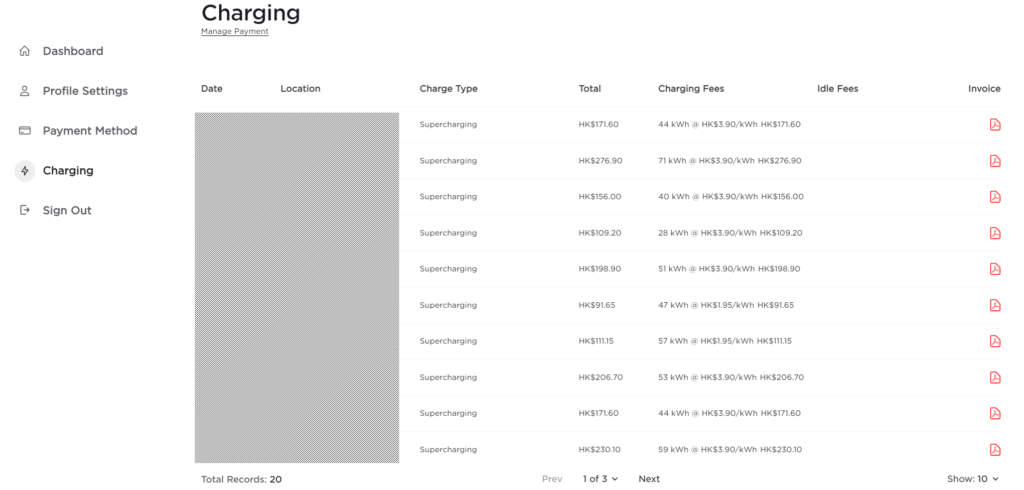
There are other DC-DC medium charging facilities that I go to that are free of charge. However, again, I don’t go make time to go there and charge my car for free. There are other standard and Tesla Wall chargers free of charge that I sometimes go to as well.
Where did I get my data?
Almost right after I’ve got my car, I’ve installed the Bluetooth OBD reader so I could use the scan my tesla app on my phone. It reads the car’s computer and spits out a lot of useful information on the app. For example, I can find out exactly how many kWH I have consumed until now for the lifetime of the car and how many of those are from DC charging.
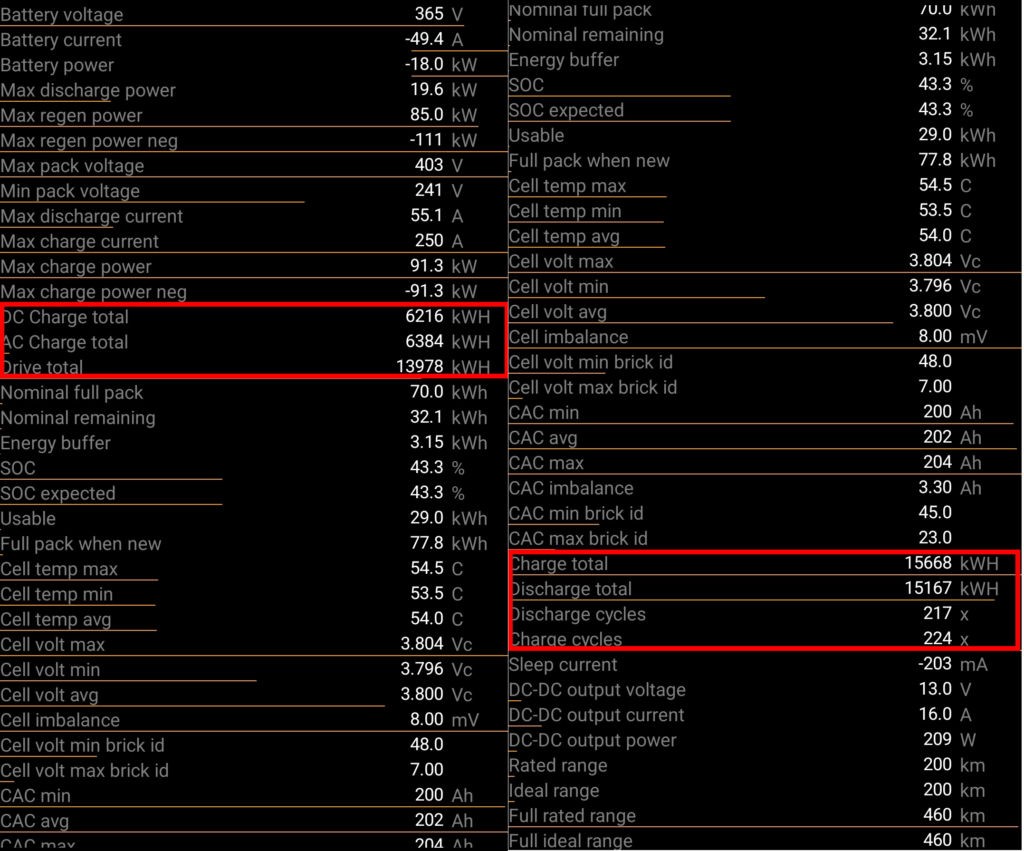
Breakdown of my Tesla Charging after 53,960KM and 12,600kWH
From the data gathered, the graph below showed the distribution of my charging habits over these past 2 years. It is interesting to see that my AC and DC charging distribution is about half and half. Others AC charging is where there are free tesla wall chargers or normal 8-9kW universal EV charging across Hong Kong. Others DC charging are free medium speed DC charging facilities that are a bit more difficult to find in Hong Kong. They can get up to 20kW. I believe more and more of these will not come as free of charge in the future as more and more EVs are on the road in Hong Kong.
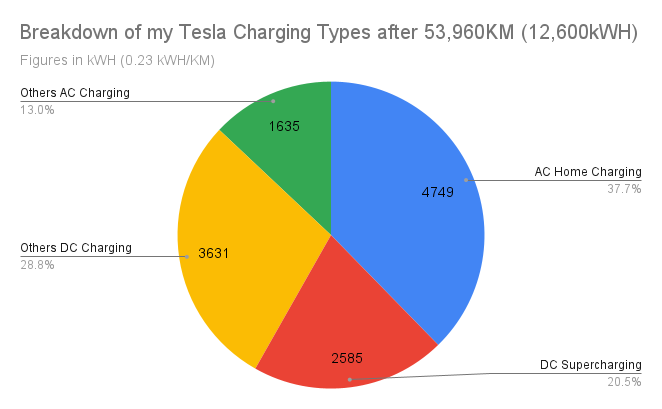
My Costs Calculations
The calculations are actually pretty simple. As you can see from above, all your Tesla Supercharging records can be found online on your Tesla account page. The exact number of kWH charged and price per kWH and total costs is listed clearly. Electricity for my home wall charging is provided by CLP Power is Hong Kong which is one of the two electricity providers in Hong Kong. Each month, I am issued an electricity bill only for my wall charging. There is a separate electricity meter only for my Tesla Wall Charger.
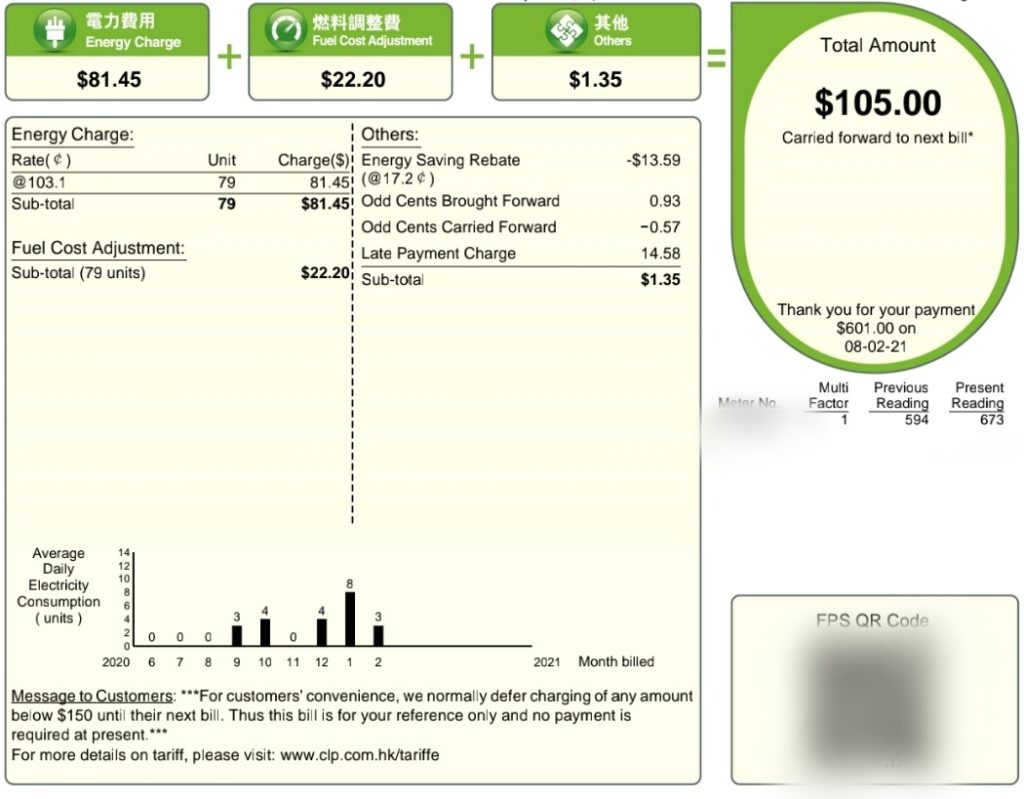
When I added up the Supercharging invoices, I’ve charged 2,585kWH and the total costs was HKD$8,325.30 (USD$1,060.57). This equates to HKD$3.22/kWH (USD$0.41/kWH). I do not go out of my way to charge at night with the discounted rate and ~98% of the charging was done in daytime.
My home charging invoices was quite easy to add up as well. The total kWH per month and costs is listed out very clearly on the monthly invoices. Although, the actually $/kWH might flutuate slightly from month to month depending on usage with rebates and adjustments. I’ve charged 4749kWH at home and the total costs was HKD$6,143 (USD$782.56). This equates to HKD$1.14/kWH (USD$0.15/kWH).
The Others AC Charging and Others DC Charging was basically derived from subtracting the total DC and total AC charging numbers from the Tesla Supercharging and Home Charging numbers.
A note on Regenerative braking
The Tesla computer does spit out a regenerative braking kWH number. The number is derived from the “Charge Total” figure minus the “Drive Total” figure. This gives a figure of 3,068kWH which is given back to the car’s battery via regenerative braking. The percentage of regenerative braking given back to the car is almost at 20%. I have regenerative braking set to LOW in my Tesla Model 3 but I do make a conscious effort in one pedal driving and let the car roll down to a stop at a light or any situation where I could make use of regenerative braking by not stepping on the brake pedals.
Driving Efficiency
In all honestly, I don’t believe Tesla EVs are that efficient. There are a lot of reason why battery will be lost during the charging process or just simply by the nature of Lithium ion batteries similar to those on your smartphone. I took the numbers from the Tesla’s computer and the difference between the “Charge Total” and the “Drive Total” is about 90%. This number means that 10% of the charge is lost from during the charge and energy dissipating etc.
My driving habits
Your ultimate EV efficiency is based on how you drive your Tesla. We all know about vampire drain and how turning on your Sentry Mode drains your battery. My Tesla Model 3 is the Performance version with All Wheel Drive, two motors and 20″ rims so it is the least energy efficient of all the Model 3 versions available now. I have Sentry mode turn on all the time except when I am parked at home. I have the air conditioning on 24/7 in Hong Kong and also with hot cabin protection on. Hong Kong summers can get up to 38 degrees Celsius (100 F) on most days. I run the fan speed up fairly high. In other words, I do practically nothing to keep battery use to a minimum on my Tesla. I do not do anything consciously to keep my energy usage to a minimum. The only conscious effort is regenerative braking which I have mentioned above.
The ultimate number $/KM
The ultimate number is $/KM in terms of costs. I’ve spent HKD$14,468.30 (USD$1,843.12) after 2 years (26months) with 53,960KM driven which equates to HKD$0.27/KM (USD$0.034/KM).
In my previous Lexus CT200H, I was getting around HKD$1.20 per KM. The price saving is almost at 78%. This is given the fact that I am already doing a lot of Supercharging and do basically nothing to save money on charging.
How to decrease your charging costs
If I want to save more on charging, I could decrease my use of Supercharging, only Supercharge at night or look for more free charging opportunities. I could also try to decrease the kWH/KM usage. The total kWH charged for these past two years is 12,600kWH which equates to 0.23 kWH/KM. I could technically use less Air Conditioning which is pretty impossible in Hong Kong or turn off Sentry Mode. However, I do not think the savings on kWH will be more than the lost that I would get from turning off Sentry Mode.
The deal is Supercharging at the night time rate
The daytime Supercharging rate is HKD$3.9 per kWH and the night time rate is HKD$1.95 per kWH which is a 50% discount/incentive. With HKD$1.95 per kWH, it is about 52% more than charging at home for me which is around HKD$1.14 per kWH. Although, the Supercharging costs of HKD$1.95 is irrespective of a V2 or a V3 stall which could give you a speed of 200kW+. You could charge your Tesla from 0% to 100% in about 30minutes compared to 9 hours. Of course, we know that Supercharging is bad for your battery mainly because of the intense heat that the battery generates during Supercharging. Although, for the convenience, the Supercharging network is indispensable for the Tesla ecosystem.
How much will it costs if I only charge at home?
What if for these past 2+ years with 12,600 kWH charged and 53,960 driven, how much will it costs if I only charge at home?
Home Charging: 12,600 kWH x HKD$1.14 = HKD$14,364. With 53,960KM driven, this equates to HKD$0.27/KM.
Even if I’ve only done Supercharging in the past 2 years, it will still costs less than fuelling my old non-EV car.
Ultimately, with fuel saving alone, it will be very easy to persuade someone to buy an EV in Hong Kong if they could charge at home.
How to find out your own $/KM?
It is quite easy on any Tesla to find the Wh/KM number. You can find it on the “Trips” page or the “Energy” page. The Wh/KM is basically how much energy in “Wh” you use per KM.
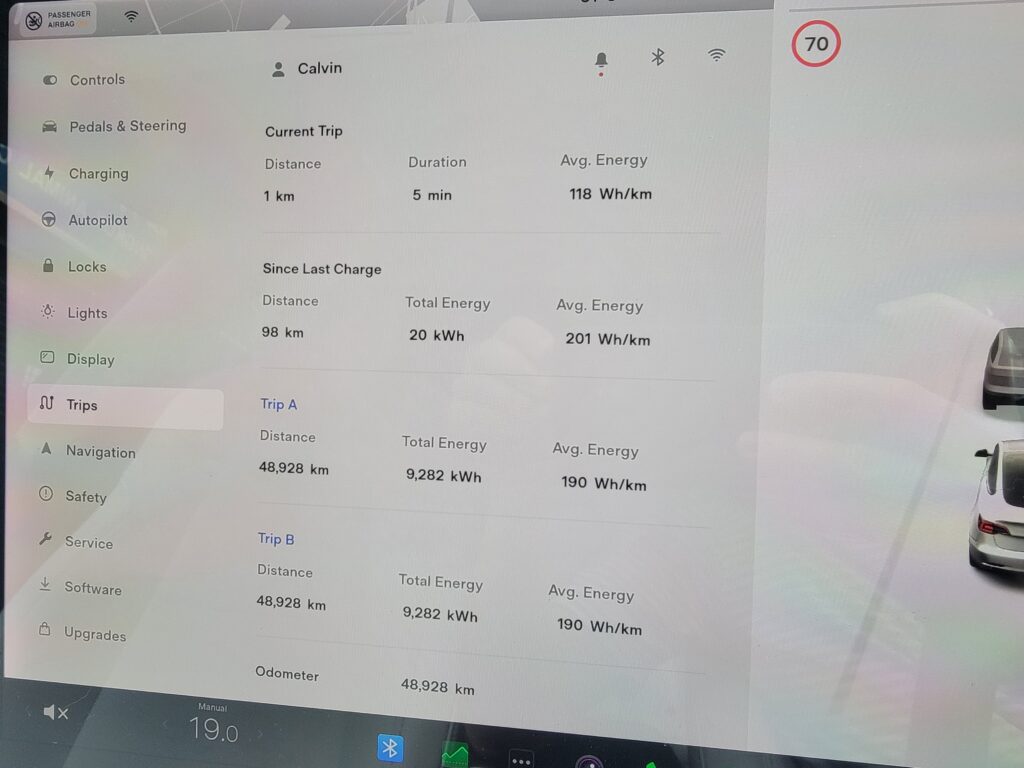
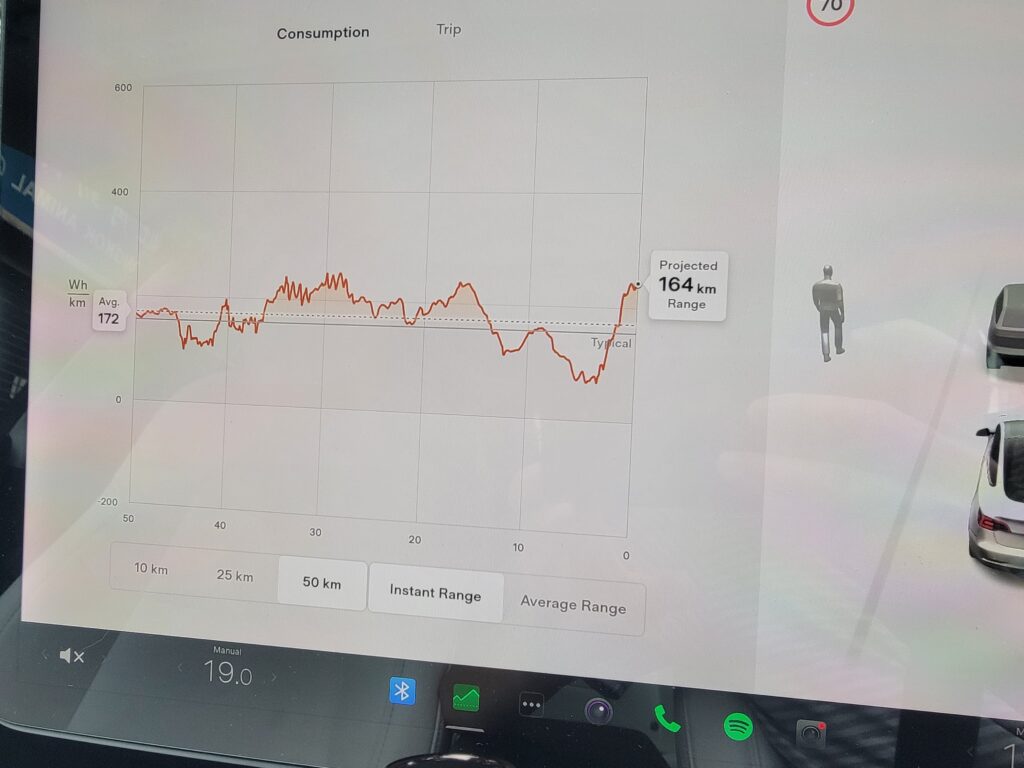
The arithmetic is quite simple or you can visit my Cost Calculator page and plug in the numbers there. When I plug in the numbers from my Trips and Energy page, it is quite similar to what I have derived from my calculations using the data from my OBD reader and charging costs.

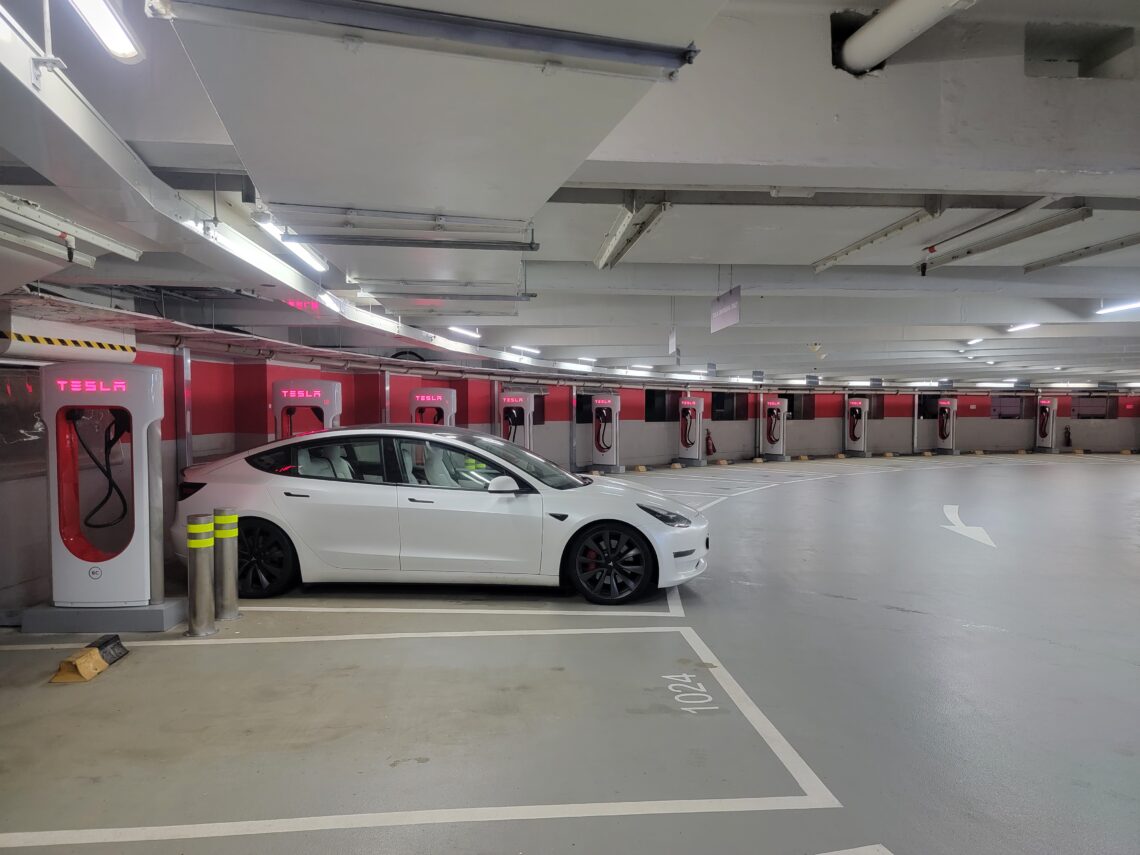




3 Comments
Kenneth
Are these savings sufficient to deter you from going back to a petrol car as a daily driver?
Other than charging costs, what other operating or unexpected repair costs have you incurred with your Model 3? How do these compare with a petrol/diesel car? Thanks!
Calvin
Hi Kenneth, thanks for your message. The saving is significant in terms of repair/maintenance costs compared to a petrol car. I’ve driven a petrol car all my life before the Model 3 and every year I will need an oil change for my engine. There is no engine in the Tesla or any EVs. I remember taking my Lexus CT200H for an annual oil change and check, even not going back to Lexus, any garage will charge you HKD1000-2000+ for an oil change/filter change/check-up. I had a Audi TT for many years, after a couple of years, there are vacuum/air leaks, oil leaks etc. etc. which are all contributed to having an engine in the car. When you take away the Engine, your repair/maintenance costs will decrease significantly.
Calvin
I am lucky that my Model 3 did not have any unexpected repair costs after 60,000KM. I am bringing the car in to Tesla for a full check-up before the main warranty for the car expires. The main issue now is my upper control arm which is failing I think but I never even had a brake pad replacement yet as I am driving it diligently with regenerative braking a lot. You need to change your mindset a bit when driving an EV and utilize single pedal driving to the fullest.